ALL ABOUT SNOWY OWLS
Arctic Watch
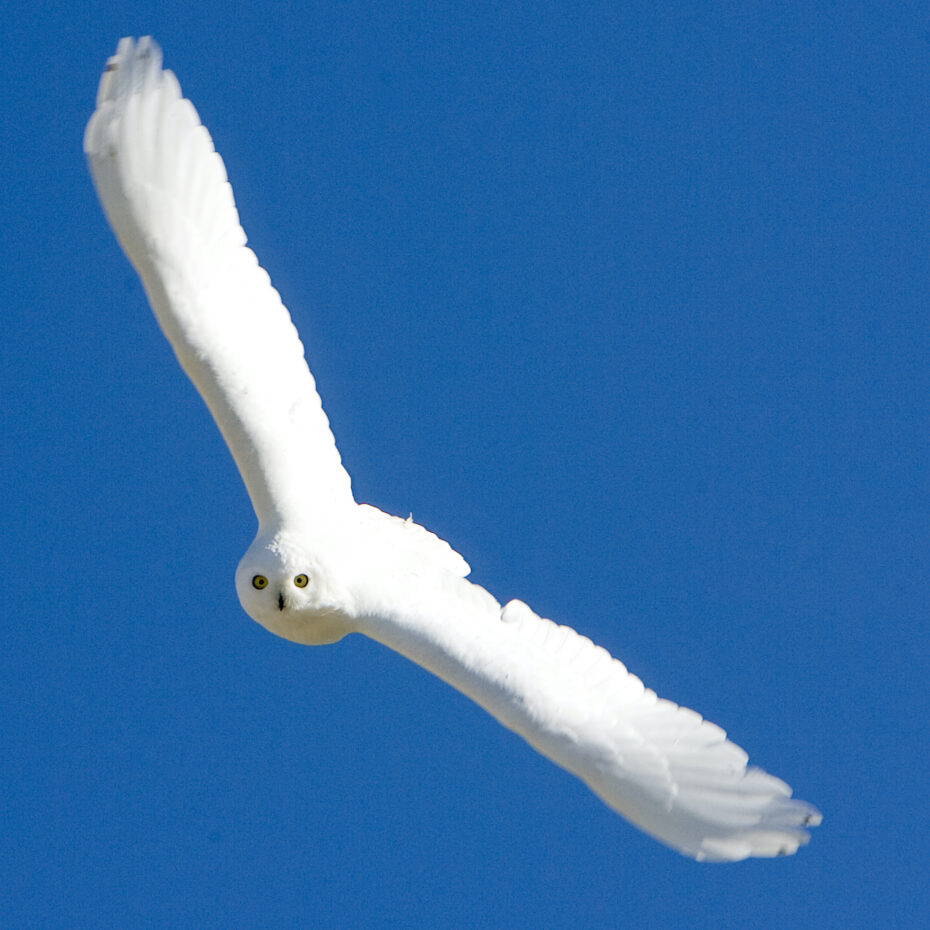
Arctic Watch
February 18, 2021 | Arctic Watch, Somerset Island, Nunavut
All you need to know about the snowy owls of Somerset Island and Arctic Watch Lodge.
Snowy owls (Bubo scandiacus) are one of the only birds that have the ability to live in the Arctic year-round. They're an incredibly resilient species that can be found across the Canadian Arctic and even in southern latitudes (of North America) during the winter months.
In the Arctic, snowy owls are regarded as one of the top predators of the tundra. Their particularly rounded body with extremely thick feathers including plumage on their legs and feet help them stay warm during the winter months. Yellow-eyed and incredibly alert, snowy owls are the sixth heaviest owl on the planet and have roughly the third longest wingspan of all owls (approx. 5 feet).
Male owls (measuring almost 65cm tall) are often nearly all white with a few small brown spots. Females are white feathered with a beautiful speckle brown.
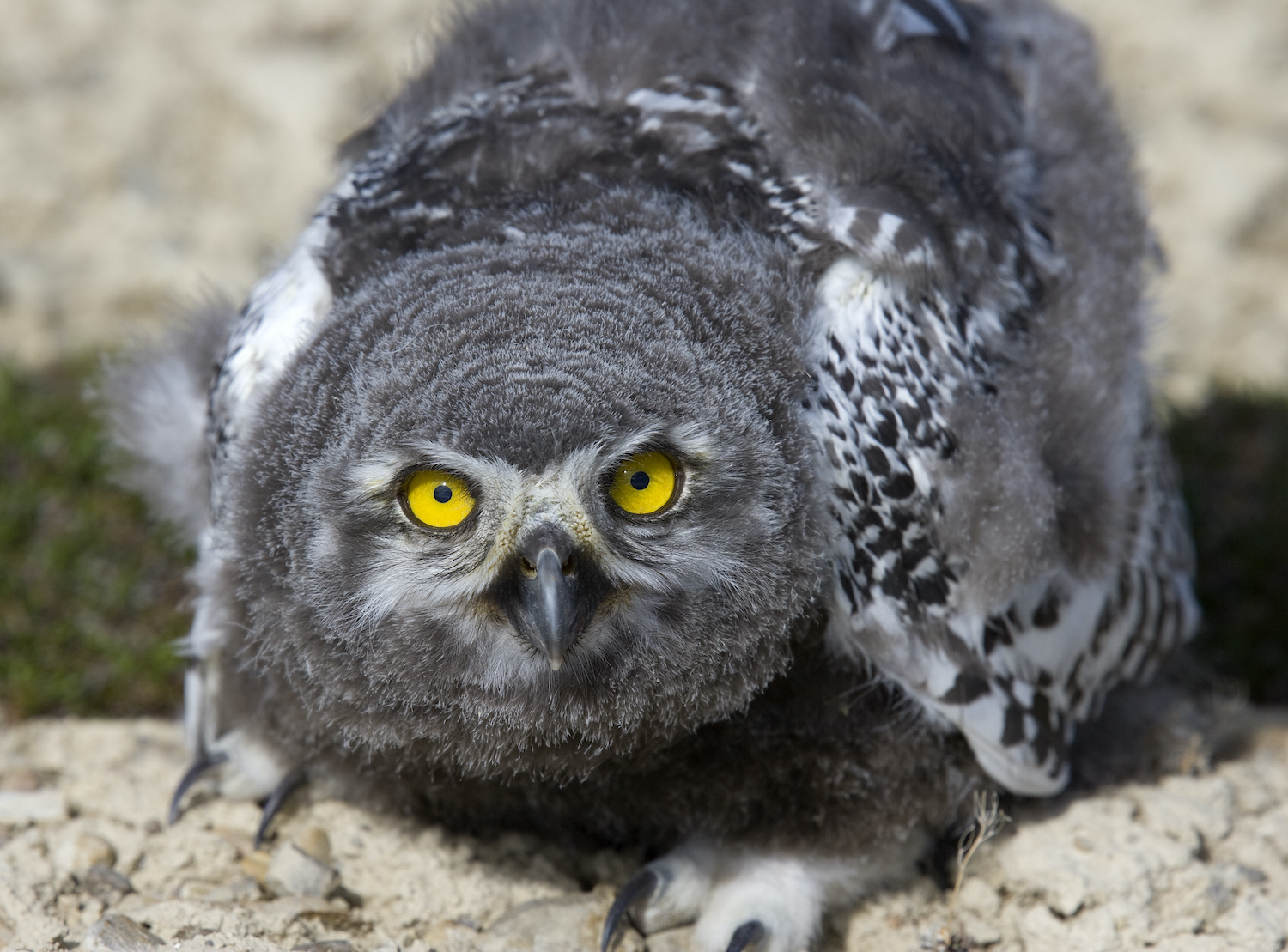
Snowy owls live primarily off lemmings and can hunt other avian species including snow buntings, ducks and geese. At Arctic Watch, we've even observed snowy owls attacking Arctic fox pups! Contrary to most owls that only hunt during the night, snowy owls are most active during the day (especially during the summer 24-hour Arctic sunlight).
These gorgeous owls are nomadic - often nesting in different locations every year. Their range is heavily tied to abundance of food on the given year. In food scarce seasons, adult pairs will often not nest. A female snowy owl can lay between three and 13 eggs per season. Snowy owls can travel upwards of 2000km in search of lemming abundant areas to nest!
Nesting sites are on the ground in typically elevated mounds with good 360-degree views of the surrounding areas. Adults are extremely protective of their nests; they're known to attack foxes, nearby birds and even humans that approach too close. While the male does the majority of defences, females also take part.
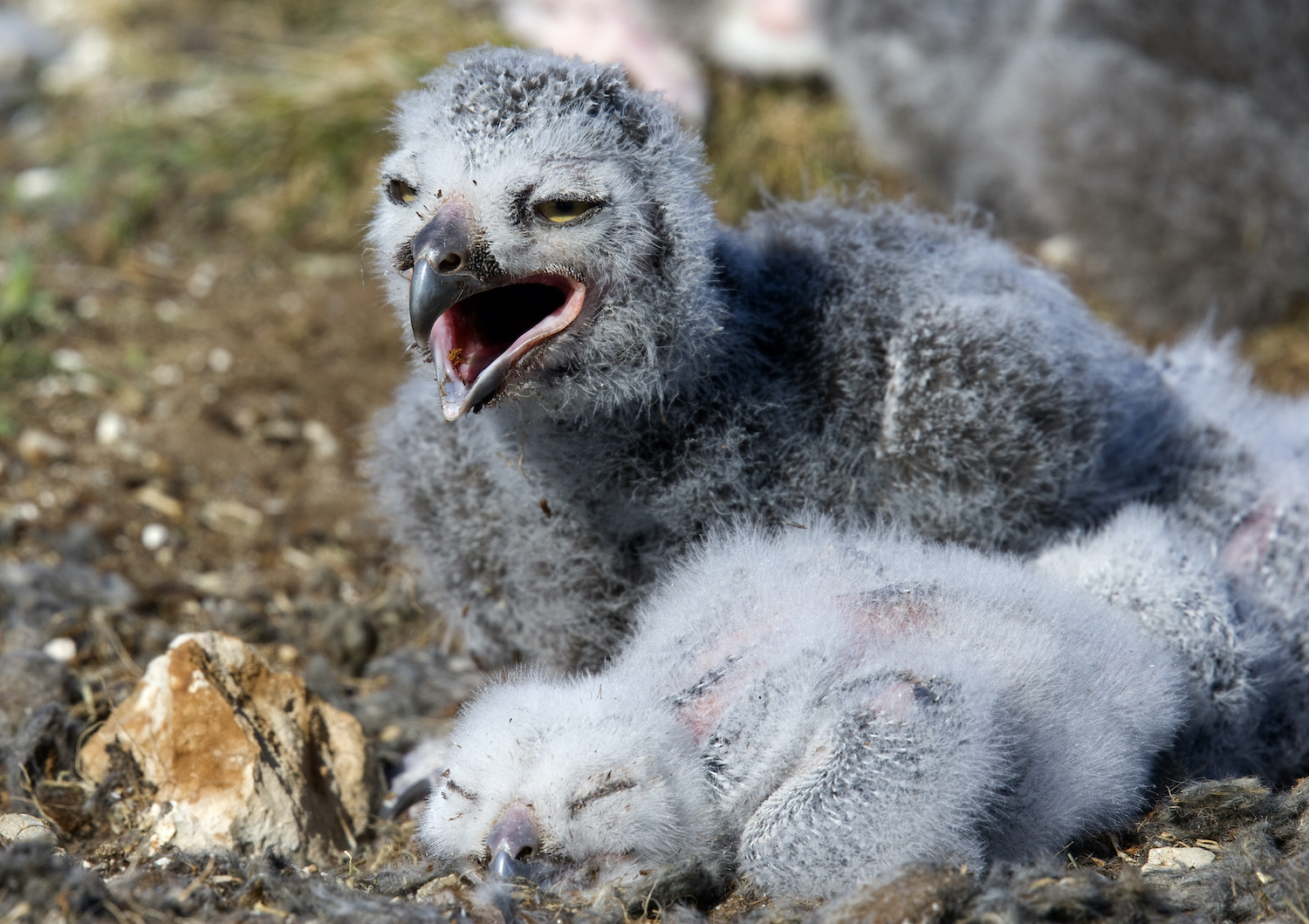
Egg incubation lasts approximately one month. Snowy owl chicks hatch one to three days apart - older chicks have been known to weigh as much as 7-times more than their younger siblings. At roughly three weeks, females will leave the nest to hunt as well, creating lemming mounds (stacked dead lemmings around the nest) to ensure chicks can eat regularly. These "mounds" can contain as many as 80 - 100 lemmings per nest. Parents are known to selectively feed their young - tearing easy-to-swallow morsels at younger age and increasing the range of food later in life. In food scarce years, older siblings can be carnivorous, eating their younger siblings to survive.
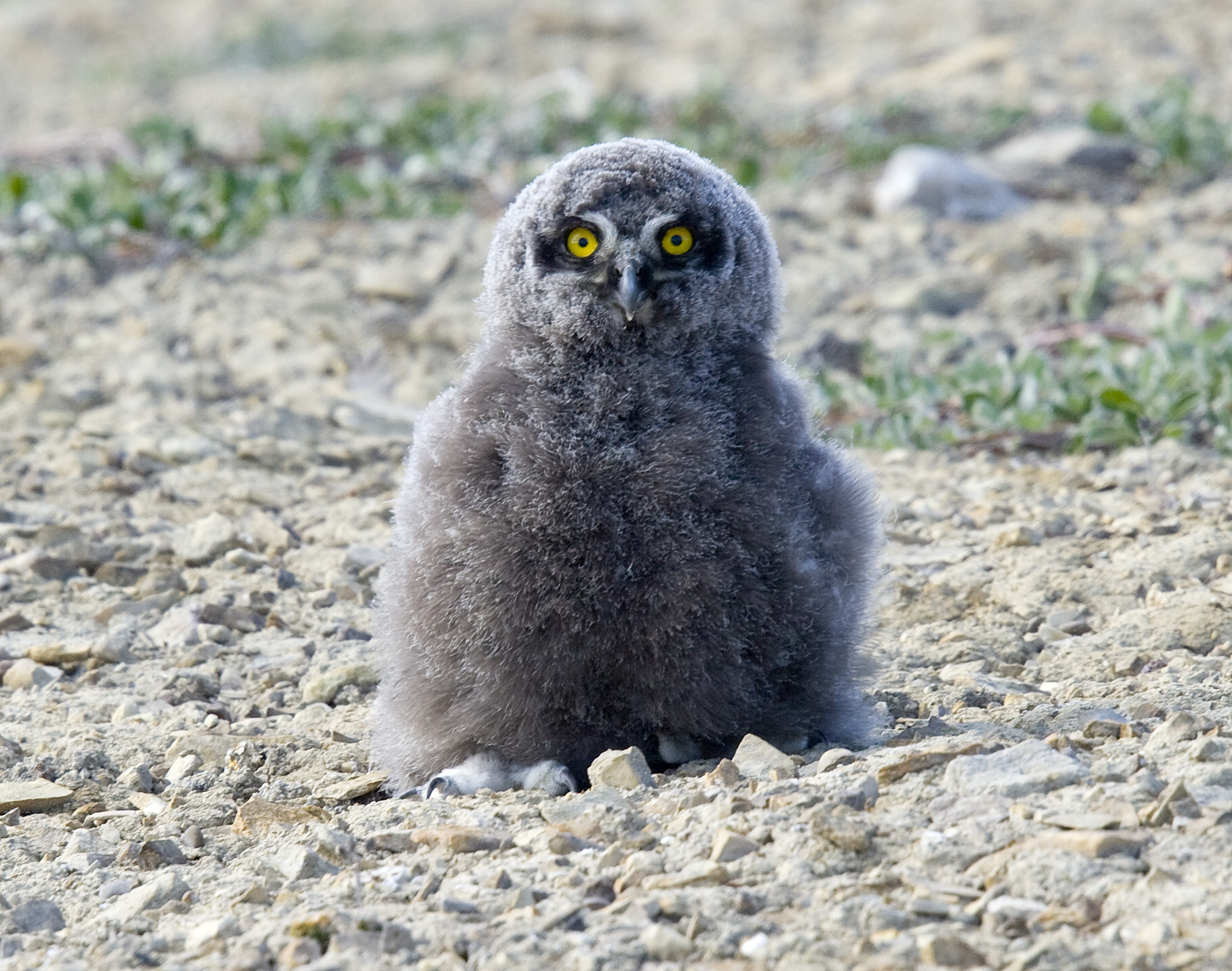
Snowy owl chicks start to walk around the vicinity of their nest at roughly two weeks old. They're inquisitive and survive by learning to move at a very young age. In this photo below, a juvenile owl walked up to a guest at Arctic Watch, just to "test" its dominance. Although the guest tried to stay a good distance away, this owl was intent on announcing his presence! It's safe to say they can be very territorial...
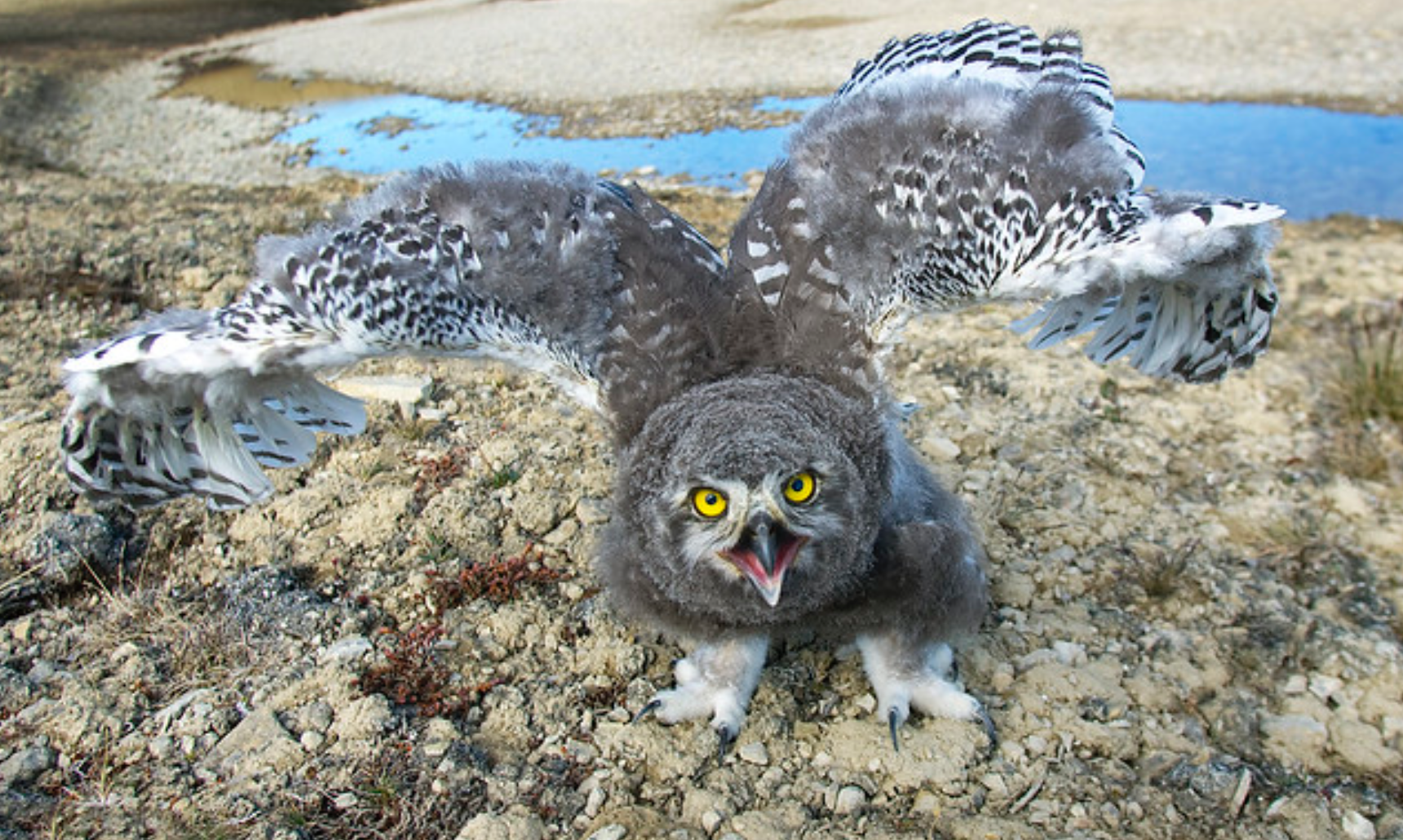
On Somerset Island and the surroundings of Arctic Watch, snowy owl populations are heavily tied to lemming populations on the given year. In summer seasons where we see an abundance of lemmings, we can observe numerous pairs of nesting owls on the tundra (the record is eight nesting pairs in one summer). In lemming-scarce years, we generally observe one or two pairs of owls that often won't nest that season.
Photographing snowy owls often requires a significant amount of patience. While the best way to photograph snowy owls is to locate their nesting sites using a telescope/binoculars and sit a comfortable distance from an owl, they tend to be quite aloof. We generally recommend packing one long lens (I.e a 400mm fixed with a doubler as backup) and one closer lens (i.e. 70 - 200mm) with a tripod (crucial!). An ND filter will reduce glair on the tundra when photographing these animals - the strong summer Arctic sunlight and glare from the tundra as well as white plumage of the owl can affect the image quality.
When photographing snowy owls, it's often preferable to wear neutral colours that blend in with the tundra as they tend to have an extremely good eyesight!
See snowy owls on our Arctic Watch Discovery Experience.
We understand that booking a trip like this is a big endeavour. Please reach out to us with any questions that you might have regarding your upcoming adventure.